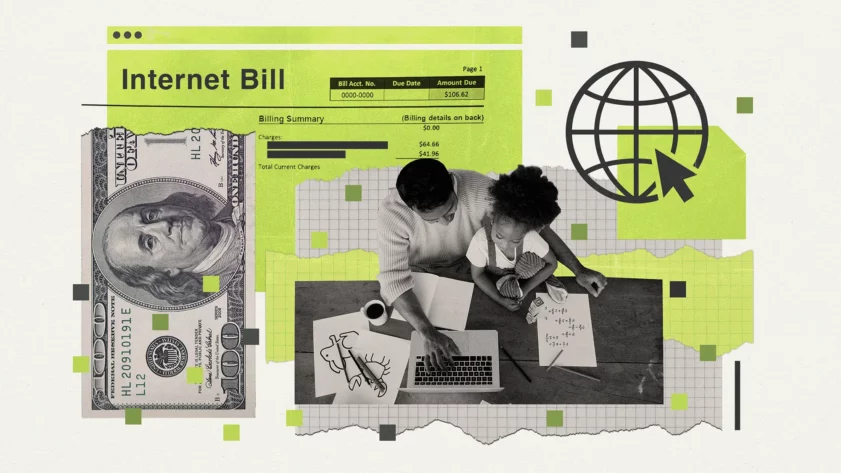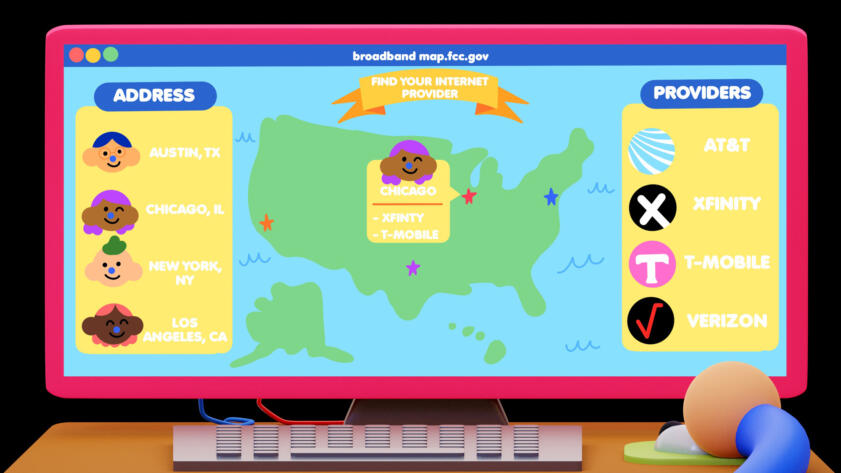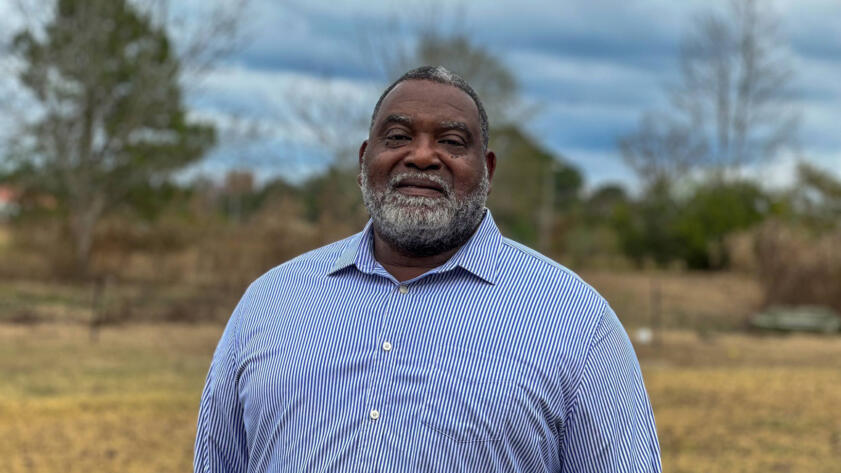Subscribe to Hello World
Hello World is a weekly newsletter—delivered every Saturday morning—that goes deep into our original reporting and the questions we put to big thinkers in the field. Browse the archive here.
Four days ago, on April 30, a popular and widely used government program began the process of shutting down due to congressional inaction. With its demise, closing the digital divide becomes considerably more difficult.
The federal government first launched a broadband subsidy program during the depths of COVID-19 pandemic lockdown, where internet connections became many peoples’ only window into the outside world. That effort, the Affordable Connectivity Program (ACP), was made permanent as part of the 2021 Infrastructure Investment and Jobs Act. The ACP offered a $30 monthly subsidy ($75 on tribal lands) to qualifying low-income households for broadband internet or cell phone bills. The program also offers up to $100 toward a computer or tablet.

Still Loading
Millions Rely on an Affordable Internet Subsidy. It Ends This Month
Roughly half of Affordable Connectivity Program recipients are military families, one in four live in rural communities, and one in five are households with people who are 65 or older
However, it came with a major caveat: The $14.2 billion Congress allocated toward the program was a one-time thing. When the money ran out at some point in the future, Congress would have to infuse the program with more money or find a more permanent funding solution.
That future has officially arrived. More than 23 million American households, about 45% of all those eligible nationwide, will no longer receive the full subsidies that previously helped them get online. Two-thirds of those households had “inconsistent or zero connectivity prior to ACP enrollment,” a recent Federal Communications Commission (FCC) survey revealed.
Partial subsidies of $14 ($35 for households on Tribal lands) will be available for some ISP customers for service in May, according to an FCC notice. But that will be the program’s last disbursement.
“Many recent press reports about the impending end of this program describe how ACP households across the country are now facing hard choices about what expenses they have to cut, including food and gas, to maintain their broadband access, with some households doubtful they can afford to keep their broadband service at all,” FCC Chair Jessica Rosenworcel wrote in an April letter to congressional leaders. “These press reports echo what the Commission has been hearing from ACP households directly, with many writing the agency to express their distress and fear that ending this program could lead them to lose access to the internet at home.”
Case in point: Alfredo Camacho, who lives in Guadalupe, California, told CalMatters that because he is no longer able to afford home internet service, he’s started taking his daughters to the parking lot outside a local library so the family can use the free wifi to do homework and look for jobs.
“This takes away grocery money,” said Camacho, who is one of around three million Golden State residents losing access to the subsidy. “Being a single father, $30 goes a long way.”
In anticipation of the shut-down, the program stopped accepting new sign-ups in early February. Participating households started receiving notifications about the ACP’s potential shuttering in January. After the program ends, ISPs are required to allow ACP-using households to cancel without termination fees.
The program is an essential part of how millions of Americans get online, with nearly one-in-five U.S. households relying on the subsidy to keep their internet subscriptions active. Uptake has been especially strong in areas with high-poverty rates in both urban and rural areas.

The BreakdownStill Loading
How to Search for a Better Deal on Broadband
You might even be able to help improve crucial government broadband data in the process
“[ACP is] helping people who did not previously have access to get online,” wrote John Horrigan, a leading researcher tracking connectivity trends, who noted that ACP enrollment has been especially high in diverse, high-poverty areas. “In other words, the answer to the question of whether the ACP is closing the digital divide is a clear yes.”
In 2022, the Biden Administration announced securing commitments from 20 ISPs to begin offering internet service with at least 100 Mbps speeds to ACP-qualifying households—for just $30 a month and without data caps. When combined with the $30 monthly ACP subsidy, internet connectivity became effectively free for low-income households.
ACP also increased the reach of another Infrastructure bill-created effort: The Broadband Equity Access and Deployment (BEAD) program. BEAD is a $42 billion pool that subsidizes ISPs to build new broadband networks in parts of the country where infrastructure is lacking. A Common Sense Media study found that by allowing more people to sign up for internet service, ACP reduced the per-household BEAD subsidy necessary to incentivize ISPs to build new networks in rural areas by 25%. In essence, with ACP in place, money the government has budgeted to expand broadband coverage could go a lot farther in closing the rural digital divide.
ACP is also massively popular with the public. A survey released last year found 78% of registered voters supported extending ACP funding. That support crossed the political spectrum, with nearly all Democrats and just over two-thirds of Republicans responding in favor of its continuation.
On Capitol Hill, the program initially appeared to have uncommonly broad support. Last Fall, a bipartisan group of 45 lawmakers, 29 Democrats and 16 Republicans, wrote to congressional leadership asking them to make ACP extension a priority. “We have a unique window of opportunity to ensure that every family and child — rural, urban, and suburban — have access to affordable broadband, and can thrive in the digital age. ACP has become a lifeline for Americans, and we cannot afford to let it expire,” they charged.
ACP has even united the left and right sides of the political spectrum. The Communication Workers of America, a labor union representing many telecom employees (Full disclosure: The CWA is the parent union of The NewsGuild-CWA, which represents The Markup’s employees.), has advocated for renewing the program. Non-profit advocacy groups like Common Sense Media and the National Digital Inclusion Alliance organized drives for ACP supporters to call their representative about the looming expiration. The R Street Institute, a libertarian think tank, has made its own push–hailing ACP has a model for other government connectivity programs. Conservative publisher Steve Forbes wrote an op-ed for Fox Business to support the program.
“It’s often said there are three parties on Capitol Hill – Republicans, Democrats and appropriators. In a rare moment of bipartisan agreement, the first two have recognized the positive impact of the Affordable Connectivity Program,” Forbes wrote. “Now it’s time for the appropriators to get on board and find a solution to permanently fund the program.”
A coalition of more than 230 nonprofit groups and municipal governments, ranging from the NAACP to the City of San Antonio, Texas, wrote a letter begging congressional leaders to renew the program.
ACP didn’t just have bipartisan backing, it also had bipartisan uptake. A report by researchers at USC’s Annenberg School for Communication and Journalism found a nearly even split in households taking advantage of the subsidy residing in Democratic and Republican congressional districts.
In 2022, The Markup published an investigation showing how several ISPs disproportionately offered the worst internet deals to poorer, less White, and historically redlined neighborhoods, in major cities across the country. When we went to the companies for comment, many highlighted their participation in ACP as a defense against their inequitable infrastructure deployment and pricing practices. When it comes to closing the digital divide, ACP is the method the telecom industry points to as an ideal solution–and industry group USTelecom has come out in favor of its extension, alongside individual ISPs like AT&T.
Companies have also announced their own, private efforts to fill in the gap left by ACP’s expiration. AT&T, for example, was one of the companies that rolled out one of the $30 100 Mbps internet plans. The company will continue offering this low-cost plan, which will no longer be effectively free, after the end of ACP.
A directory of ongoing low-cost internet plans offered by ISPs, compiled by the National Digital Inclusion Alliance, is available here. The FCC’s Lifeline program, which provides a monthly $9.25 ($34.25 on Tribal lands) connectivity subsidy to eligible households, will remain in place; however, Lifeline’s eligibility qualifications are more stringent than the ACP’s.
The ACP, however, has had its own controversies. A 2022 report from the FCC’s Inspector General identified some likely fraud in the program. “In the most egregious example identified, more than one thousand Oklahoma households were enrolled based on the eligibility of a single BQP [Benefit Qualifying Person], a 4-year old child who receives Medicaid benefits,” the report noted.
Some Republican senators jumped on the report to attack the program. “Any extension of this program—if it should occur at all—must only happen after there’s a thorough review of the program’s effectiveness at increasing broadband adoption and preventing fraudulent, wasteful, and duplicative spending,” Texas Republican senator Ted Cruz told the Washington Post.
According to the Institute For Local Self-Reliance’s ACP Dashboard, there are 1.7 million Texas households currently using ACP.
Last October, the Biden Administration requested Congress pass stopgap funding to keep the program active through the end of 2024. “Without this funding, tens of millions of people would lose this benefit and would no longer be able to afford high-speed internet service without sacrificing other necessities,” read a White House press release.
Those efforts have not proved successful.
While the $1.1 trillion spending bill passed in March avoided a government shutdown, it didn’t contain a provision to fund ACP–despite the pleadings of a letter sent to Congressional leadership by dozens of U.S. Senators supportive of the program.

Still Loading
What It’s Like Living With Limited Access to Internet in the Black Rural South
Across the rural South, about 38% of Black households don’t have home internet, a higher percentage than White people in the same region and the national average
Early this year, lawmakers introduced stand-alone legislation that would add $7 billion to ACP, funding the program through the end of the year. The House version, introduced by Representative Yvette Clarke (D-NY), has attracted 224 co-sponsors, including 22 Republicans who crossed the aisle to back the bill. That’s above the threshold of 218 votes required to pass a bill. Even so, Republican leadership has not elected to move the out of the Appropriations Committee, where it’s been stalled since January.
There are nearly 300,000 ACP-enrolled households in the district of Appropriations Committee Chair Kay Granger (R-TX), who would have the ability to advance the legislation.
In early April, Clarke filed a discharge petition, which, if passed, would have circumvented the House Appropriations Committee and forced a vote before the full House of Representatives. While Clarke’s bill extending ACP has enough cosponsors to pass, her discharge petition was unable to secure enough backing to force a vote on legislation a majority of the House had already backed publicly.
One potential reason Republicans have not advanced Clarke’s discharge petition is that doing so could violate the Hastert Rule—an unwritten rule created by former Republican House Speaker Denny Hastert, which holds that Speakers should only move bills forward when most members of the majority party support it. Earlier this year, another Republican representative threatened to oust House Speaker Mike Johnson (R-LA), who has over 285,000 ACP-enrolled households in his district, following the passage of a Ukraine aid bill that violated the Hastert Rule.
In the past week, there have also been some last-minute legislative efforts introduced to save ACP.
Senator Maria Cantwell (D-WA) filed an amendment to another FCC-related bill that could help fund ACP. But the vote to approve the amendment was scrapped shortly before it was supposed to occur on Wednesday.
On Tuesday, Senator John Fetterman (D-PA) introduced a bill that would pay for ACP on an ongoing basis through the Universal Service Fund, a pool of money funded by fees imposed on telecommunication providers that currently pays for things like Lifeline and a program supporting broadband connections for schools and libraries.
The inability of Congress to pass legislation that has both broad public and industry support is, in a sense, not particularly surprising. Republican leaders in the House have struggled to get any legislation through the far-right elements of their caucuses–even, in one case, the party’s own government funding bill.
The current Congress is, in terms of passing legislation, the least productive in recent memory–passing only 0.4% of bills introduced. It passed fewer pieces of legislation than the last session of Congress, which a Georgetown study found was the least effective since the Civil War.





